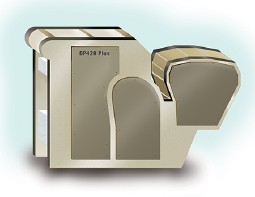More Tech Tips
- • Print Troubleshooting Tips for Adobe InDesign
- • Ditch the Typos with InDesign’s Dynamic Spellcheck Settings
- • Unlocking Design Flow Secrets: Expert Advice for Print Projects
- • Packaging Your Files for Print: 5 Simple Steps for Flawless Printing Results
- • 6 Tips for Creating an Impossible-to-Ignore Cover
- • A Perfect Landing Place
- • How to Rebrand Your Business in 7 Steps
- • Add Beauty and Balance Using the Golden Ratio and the Perfect Spiral
Understanding Grid Systems in Design
|
One of your main goals when designing your marketing materials should be to always obtain a certain level of control over the way your reader interprets your content. If they read things too quickly or in the wrong order, it could muddy the message that you're trying to get across. One of the best techniques for achieving the perfect flow through your piece is to employ the use of a grid system within your design. Using grids will ensure that your document reads exactly as it should, and that your message stands out. |
 |
|
Simply put, a grid breaks up your content into a series of easy-to-follow, easily-digestible, regular units. One of the beautiful things about grids is that they're malleable - they can be as tightly defined or as loosely interpreted as you'd like. They're a bit like the backbone, the skeleton, of your marketing documents. Grids allow you to easily arrange content in relation to the size of the page, images, and even the outer frame of the page itself in a way that is both visually pleasing and effortlessly understandable. |
|
Grids are great for not only controlling how your information flows from the perspective of the reader, but also to make sure that all of the elements on the page compliment one another in a neat and orderly way. Grids give you a system on which to hang every other tool in your toolbox. They've been used for centuries in nearly every system of writing that you can think of. Grids come in many different styles and they can be applied in a number of ways. Here are some examples of how you can use grids in your next design: |
|
Grid as a Frame: |
|
A classical form where text dominates the page and has thick, pristine borders around the edges of the page. This style is still widely used today in textbooks and dates back before the 20th century. |
 |
|
Grid as a Program: |
|
A post World War II innovation by the Swiss, this type of grid sought to challenge the century-old page-as-a-frame technique in favor of something more unusual and surprising. |
 |
|
Grid as a Table: |
|
A variation on typographic grids consisting of columns and rows occupied by cell data. The widths of the cells can vary as they follow both the x and y axis and are the basic foundation of web design. |
 |
|
Single Column Grid: |
|
The most simplistic form of a Grid as a Frame, usually consisting of one simple shape to hold text. This option usually works best for simplistic documents or textbooks. |
 |
|
Multi-Column Grid: |
|
Complex, yet flexible, grid systems that are often defined by a hierarchy of text and images, such as a magazine layout. This is the most effective strategy for controlling the flow of printed publications. |
 |
|
If you'd like to find out more information about grids and how you can use them for better effectiveness in your marketing materials, we'd be happy to help point you in the right direction. |


Thinking with Type, 2nd revised and expanded edition: A Critical Guide for Designers, Writers, Editors, & Students
by Ellen Lupton
Our all time best selling book is now available in a revised and expanded second edition. Thinking with Type is the definitive guide to using typography in visual communication, from the printed page to the computer screen. This revised edition includes forty-eight pages of new content, including the latest information on style sheets for print and the web, the use of ornaments and captions, lining and non-lining numerals, the use of small caps and enlarged capitals, as well as information on captions, font licensing, mixing typefaces, and hand lettering.



Share this